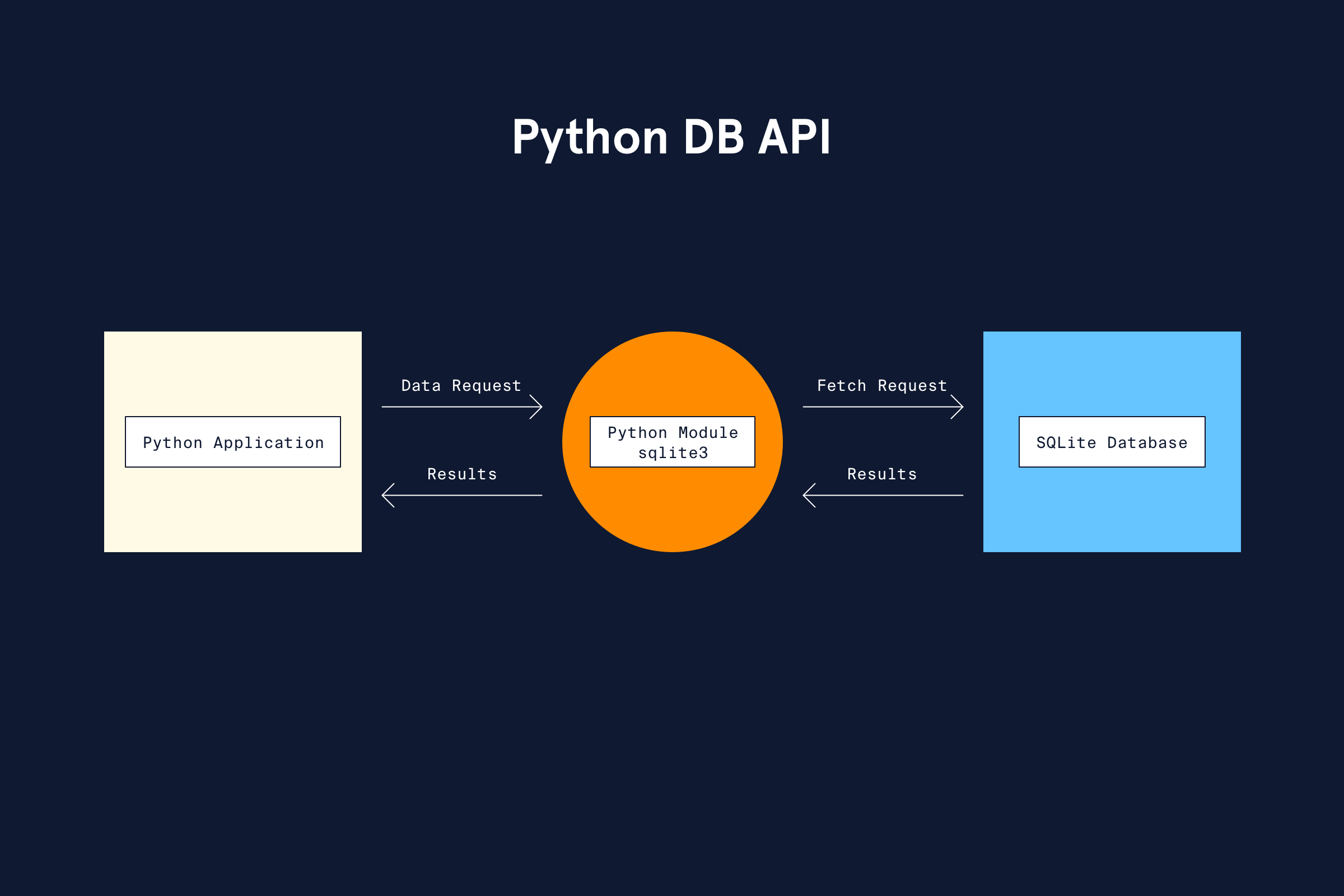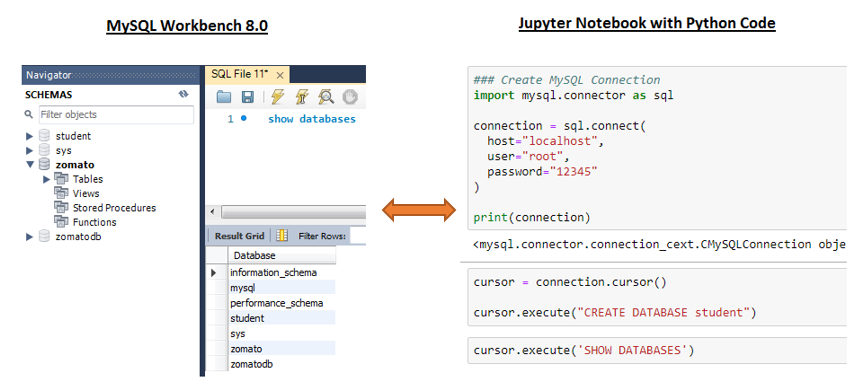What is database in Python
What is database in Python
I'm happy to help you with that!
In Python, a database refers to a system of organizing, storing, and retrieving data. It's like a digital filing cabinet where you can store and manage various types of data.
Python provides several built-in libraries and frameworks for interacting with databases, making it easy to design and implement data storage systems. Here are some popular ones:
sqlite3: This is Python's standard library that allows you to create and interact with SQLite databases. SQLite is a self-contained, file-based database that doesn't require a separate server process. psycopg2: This is a PostgreSQL adapter for Python, allowing you to connect to PostgreSQL databases and perform SQL queries. mysql-connector-python: This is a MySQL driver for Python, enabling you to interact with MySQL databases. pymongo: This is a MongoDB driver for Python, providing an interface for working with MongoDB databases.Python's database libraries often provide APIs (Application Programming Interfaces) that allow you to perform common operations like:
Creating and dropping tables Inserting, updating, and deleting data Executing SQL queries Fetching and iterating over query resultsSome popular database types in Python include:
Relational databases: These store data in tables with defined relationships between them. Examples include MySQL, PostgreSQL, and SQLite. NoSQL databases: These are designed to handle large amounts of unstructured or semi-structured data and often provide flexible schema designs. Examples include MongoDB, Cassandra, and Redis. Object-relational mapping (ORM) tools: These allow you to interact with relational databases using Python objects instead of SQL queries. Examples include SQLAlchemy and Django's ORM.When choosing a database for your Python project, consider factors like:
Data structure and complexity Query patterns and performance requirements Data storage and retrieval needs Scalability and availabilityIn summary, Python provides various libraries and frameworks for interacting with databases, allowing you to design and implement data storage systems that meet the specific needs of your projects.
Python database operations examples

I'd be happy to provide you with some Python database operations examples. Here are a few:

Example 1: Connecting to MySQL Database

Here's an example of how to connect to a MySQL database using the mysql-connector-python library:
import mysql.connectorDefine the connection parameters
username = 'your_username'
password = 'your_password'
host = 'localhost'
database = 'your_database'
Establish the connectioncnx = mysql.connector.connect(
user=username,
password=password,
host=host,
database=database
)
Create a cursor object to execute queriescursor = cnx.cursor()
Execute a query (e.g., SELECT * FROM table_name)cursor.execute("SELECT * FROM your_table")
Fetch the results as a list of dictionariesresults = []
for row in cursor:
results.append(dict(row))
Close the connectioncnx.close()
Example 2: Inserting Data into SQLite Database
Here's an example of how to insert data into a SQLite database using the sqlite3 library:
import sqlite3 Define the connection parametersdatabase_name = 'your_database.db'
Establish the connectionconn = sqlite3.connect(database_name)
Create a cursor object to execute queriescursor = conn.cursor()
Insert some data (e.g., INSERT INTO table_name VALUES ('value1', 'value2'))cursor.execute("INSERT INTO your_table VALUES (?, ?)", ('value1', 'value2'))
Commit the changesconn.commit()
Close the connectionconn.close()
Example 3: Performing a Query on PostgreSQL Database
Here's an example of how to perform a query on a PostgreSQL database using the psycopg2 library:
import psycopg2 Define the connection parametersusername = 'your_username'
password = 'your_password'
host = 'localhost'
database = 'your_database'
Establish the connectionconn = psycopg2.connect(
user=username,
password=password,
host=host,
database=database
)
Create a cursor object to execute queriescursor = conn.cursor()
Execute a query (e.g., SELECT * FROM table_name)cursor.execute("SELECT * FROM your_table")
Fetch the results as a list of tuplesresults = cursor.fetchall()
Close the connectionconn.close()
Example 4: Creating a Table in Oracle Database
Here's an example of how to create a table in an Oracle database using the cx_Oracle library:
import cx_Oracle Define the connection parametersusername = 'your_username'
password = 'your_password'
host = 'localhost'
database = 'your_database'
Establish the connectionconn = cx_Oracle.connect(
user=username,
password=password,
host=host,
database=database
)
Create a cursor object to execute queriescursor = conn.cursor()
Create a table (e.g., CREATE TABLE your_table ...)cursor.execute("""
CREATE TABLE your_table (
column1 VARCHAR2(255),
column2 INTEGER,
PRIMARY KEY (column1)
)
""")
Commit the changesconn.commit()
Close the connectionconn.close()
These are just a few examples of how to perform common database operations in Python. The specific libraries and commands will vary depending on the type of database you're working with.






























